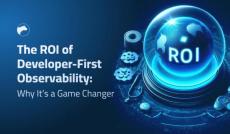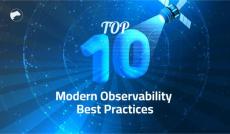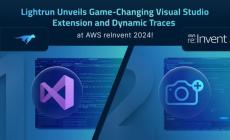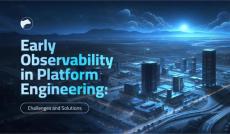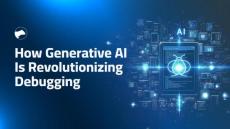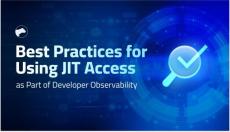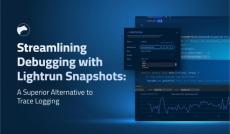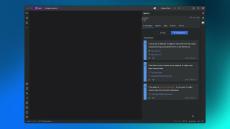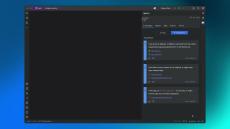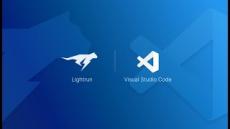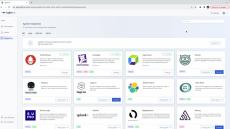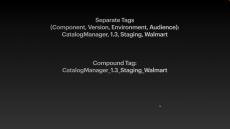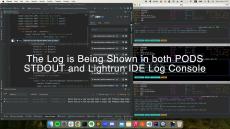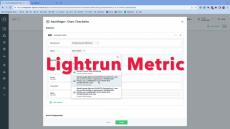|
By Eran Kinsbruner
In today’s fast-paced software landscape, downtime is costly, debugging is time-consuming, and developers are constantly under pressure to resolve issues quickly. Observability tools have traditionally been built for operations and SRE teams, focusing on post-mortem analysis rather than proactive debugging. When developers gain real-time insights into live applications and fix issues without disrupting the software lifecycle it has been proven to be a game changer for a myriad of reasons.
|
By Eran Kinsbruner
In the realm of modern software development practices, observability is no longer an optional add-on. It is a mission-critical capability. Like how control theory revolutionized industrial systems, and quality assurance redefined manufacturing processes, observability transforms the software systems and their development processes in many ways inspired by the brick-and-mortar industries. This post explores the best practices in modern observability to help you leverage its full potential.
|
By Roy Chen
In Java programming, lambda expressions or Java one-liners have become widely adopted practices for writing concise and expressive code. These compact, anonymous functions introduce functional programming concepts to Java, streamlining operations on collections, simplifying data manipulation, and enhancing code readability. Introduced in Java 8, lambda expressions are designed to represent blocks of executable code.
|
By Dror Bereznitsky
As we kick off the AWS re:Invent 2024 conference, we’re thrilled to introduce two major developer observability and live debugging advancements that bring even greater power and flexibility to developers and engineering teams everywhere. These new product capabilities — the Lightrun Visual Studio Extension and Lightrun Dynamic Traces — are designed to elevate customers’ observability workflows and streamline their development processes directly within their IDE.
|
By Eran Kinsbruner
Black Friday, the traditional kickoff to the holiday shopping season, is set to make waves in 2024 with projected sales reaching an impressive $10.8 billion—a 9.9% increase from last year according to Statistics.blackfriday analysts. According to the same team, Cyber Monday sales in 2024 are expected to reach $13.2 billion—a 6.1% increase from 2023. Both events in sum are expected to generate $24 billion in sales.
|
By Eran Kinsbruner
Since the emergence of the cloud, the DevOps movement, and the rise of microservices, developers have been increasingly responsible for the operation of their software. “You build it, you run it” (YBYR) and “You build it, you operate it” (YBYO) have become common mantras in the software engineering industry. However, there’s a misunderstanding in this statement. Developers should remain focused on building software.
|
By Eran Kinsbruner
In the rapidly evolving landscape of software development, the integration of generative AI has become a game-changer for organizations striving to deliver high-quality software at scale. Among its many transformative applications, autonomous debugging stands out as a critical advancement, offering the potential to revolutionize the way development teams tackle errors and maintain operational efficiency.
|
By Barark Ben Ari
JIT Access, sometimes referred to as just-in-time provisioning or just-in-time privileged access management (JIT PAM), is a security strategy that grants users access privileges for limited time periods. Access is granted on an “as-needed” basis. For example, if a developer requires access to a specific platform for a week or as part of an on-call access to production duty, a JIT Access system can provide that access and automatically revoke it after the time period ends.
|
By Ilan Peleg
The software world is changing rapidly due to advancements in GenAI. These technologies are disrupting traditional processes and driving automation across every part of the SDLC. The market for AI code tools is estimated to reach $30 billion by 2032. It started with code generation, then moved to testing, QA, automatic pull requests, and beyond.
|
By Tal Yitzhak
According to a recent study, failing tests alone cost the enterprise software market an astonishing $61 billion annually. This figure mirrors the vast number of resources devoted to rectifying software failures, translating into about 620 million developer hours lost each year. On average, engineers spend 13 hours to resolve a single software failure, a statistic that paints a stark picture of the current state of debugging efficiency.
|
By Lightrun
This video showcases how with Lightrun developer observability platform, developers can leverage the AI debugger within the platform plugin to swiftly identify critical code level issues through automated hypothesis and insertion of debugging actions at runtime (Lightrun dynamic logs, virtual breakpoints (Snapshots) and more. That helps reduce MTTR to mere minutes.
|
By Lightrun
This is a demonstration of the Lightrun extension for Microsoft Visual Studio IDE showing how developers can easily debug their.NET applications at runtime directly form their IDEs.
|
By Lightrun
In this insightful webinar hosted by Lightrun and moderated by Eran Kinsbruner, global head of product marketing and best-selling author in the software development space we delved into the latest developments in software development and performance, focusing on the recent Google DORA report. In the first segment of the webinar, Nathen Harvey and Amanda Lewis from Google Cloud's DORA team provided a comprehensive overview of the latest report's findings, highlighting the emerging emphasis on Performance and Reliability in the industry.
|
By Lightrun
This video outlines the Lightrun management server. It explains the various features and components of the server including user management and administration, platform security features, troubleshooting actions monitoring and management, log management and much more.
|
By Lightrun
In this tutorial, we explore how to create and use tagging and custom sources as part of your troubleshooting strategy across complex remote and distributed workload applications.
|
By Lightrun
In this demo we show how easy and fast it is to run through an entire source code project scan and identify the low quality static logs that are candidates to be omitted and replaced with dynamic logs. Lightrun LogOptimizer empowers developers to take action and be accountable for their logging costs.
|
By Lightrun
In this demo video we show how developers can shift left observability and debug in runtime an EKS cluster from their IDE. The demo shows how developers can debug a remote Java application that is deployed on 3 different EKS pods (Dev, Staging, Production) directly from their IntelliJ IDE in runtime and add logs and snapshots.
|
By Lightrun
In this demo we show case how using Chronosphere platform and Lightrun dynamic observability at runtime, developers can easily troubleshoot and resolve complex issues across cloud native applications.
|
By Lightrun
In this demo we show how developers can easily create a Metric action directly from the IntelliJ IDE for a distributed Java application and pipe the Metric data to IBM's Instana platform for further analysis and actionable consumption.
|
By Lightrun
This datasheet details various specifications and requirements for installing and running Lightrun in production.
|
By Lightrun
As experienced cybersecurity engineers with strong cloud and SaaS backgrounds, the Lightrun team fully recognizes the importance of embedding security as part of the product design and delivery. This document provides a high-level overview of Lightrun's security model, architecture and primary controls. While there are no 100% bulletproof solutions, the Lightrun platform is designed with a significant investment in security from the ground up, as outlined in this document.
- February 2025 (1)
- January 2025 (3)
- December 2024 (2)
- November 2024 (3)
- October 2024 (1)
- August 2024 (1)
- July 2024 (3)
- June 2024 (1)
- May 2024 (3)
- April 2024 (1)
- March 2024 (1)
- February 2024 (2)
- January 2024 (3)
- December 2023 (1)
- October 2023 (7)
- September 2023 (2)
- August 2023 (2)
- July 2023 (4)
- June 2023 (4)
- May 2023 (8)
- April 2023 (5)
- March 2023 (3)
- February 2023 (3)
- January 2023 (2)
- December 2022 (11)
- November 2022 (1)
- October 2022 (1)
- September 2022 (3)
- August 2022 (3)
- July 2022 (5)
- June 2022 (9)
- May 2022 (6)
- April 2022 (5)
- March 2022 (7)
- February 2022 (4)
- January 2022 (1)
- December 2021 (1)
- November 2021 (2)
- October 2021 (2)
- September 2021 (3)
- August 2021 (6)
- July 2021 (5)
- June 2021 (4)
- May 2021 (3)
- April 2021 (6)
- March 2021 (2)
- February 2021 (1)
- January 2021 (3)
- December 2020 (2)
- June 2020 (2)
Lightrun is a Developer Native Observability Platform, enabling developers to securely add logs, performance metrics and traces to production and staging in real time, on demand.
Insert logs and metrics in real time even while the service is running. Debug monolith microservices, Kubernetes, Docker Swarm, ECS, Big Data workers, serverless, and more.
Developer-Native Observability Platform:
- Increase developer productivity: Spend less time debugging and more time coding. No more restarting, redeploying and reproducing when debugging.
- Enhance site reliability: Reduce MTTR and increase customer satisfaction. Identify and resolve bugs faster with less downtime.
- Resolve bugs faster: Add logs, snapshots, and metrics dynamically to your live app. Skip the traditional CI/CD pipelines.
- Debug in production, staging, anywhere: Lightrun does not interrupt running apps. Debug in any environment: production, staging, testing, dev, etc.
Save your valuable debugging time and keep your service reliable.


